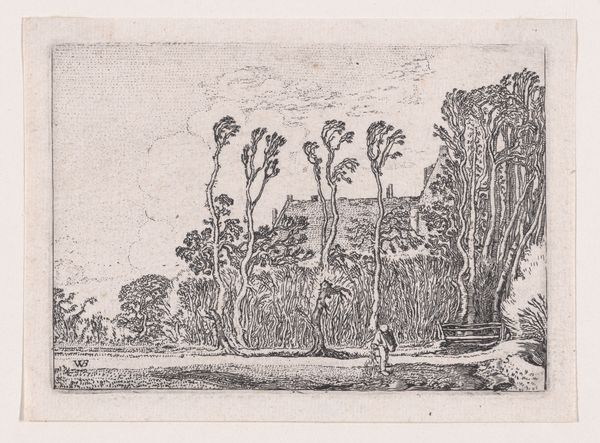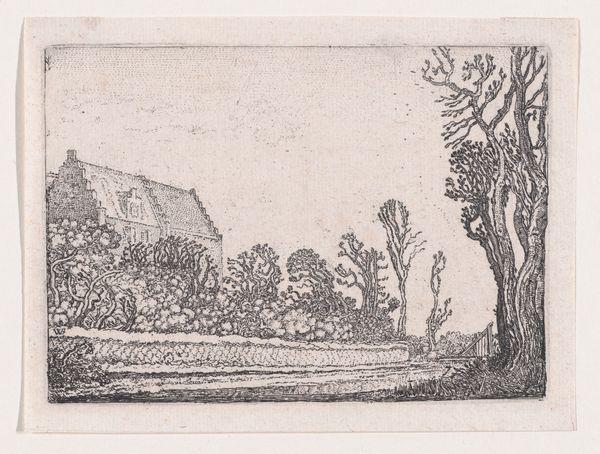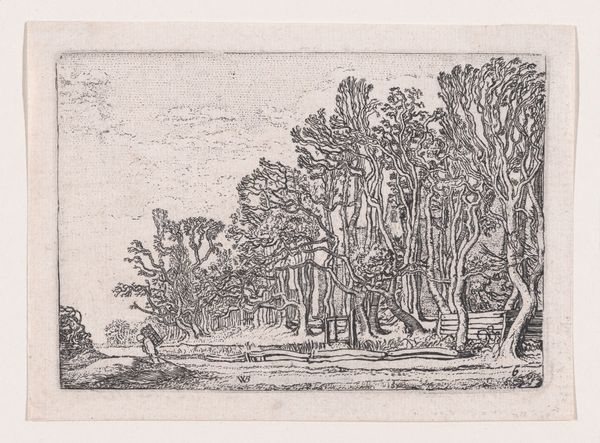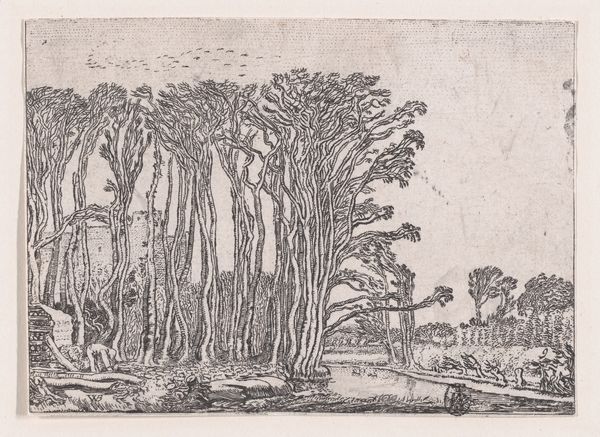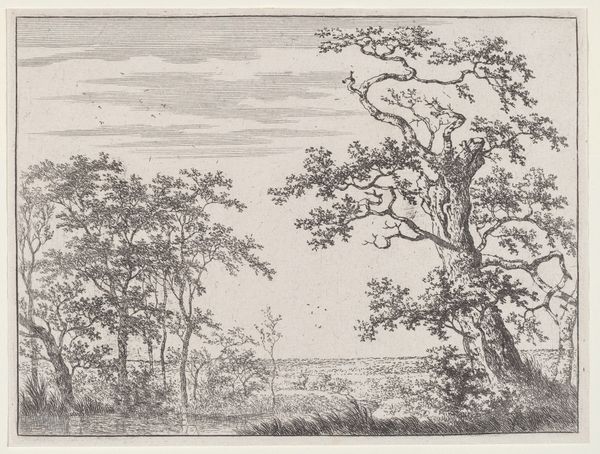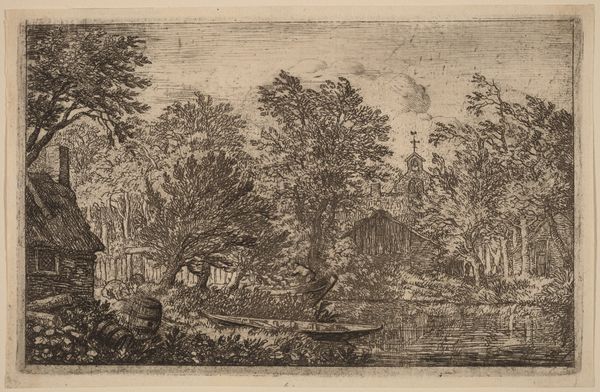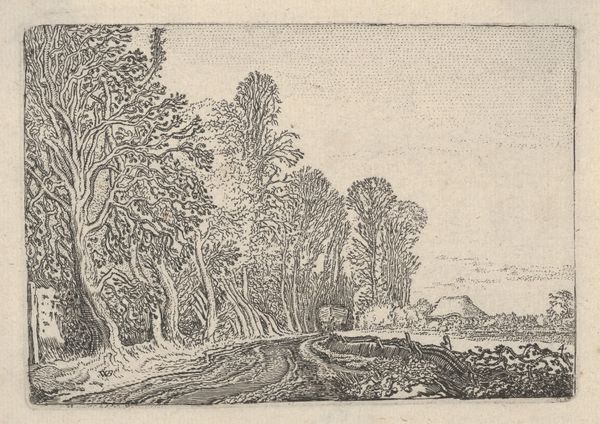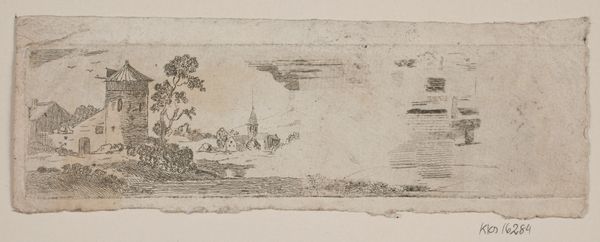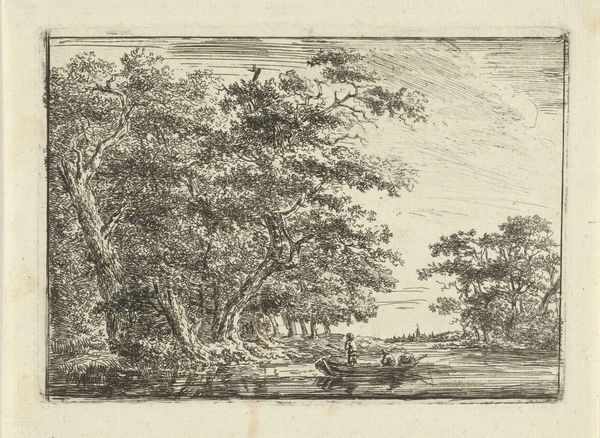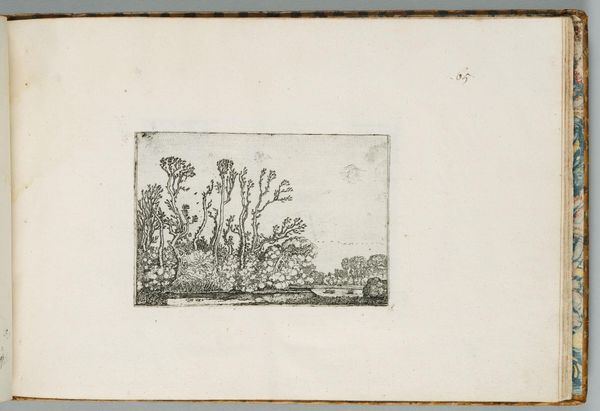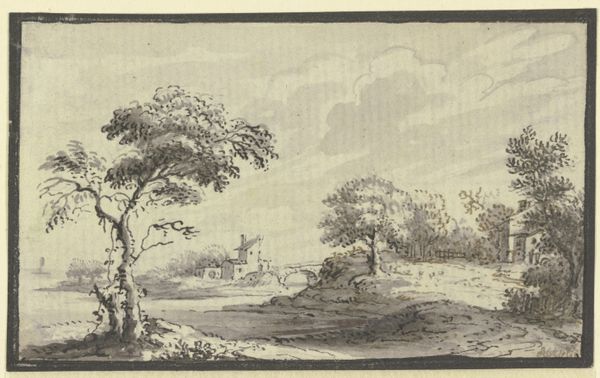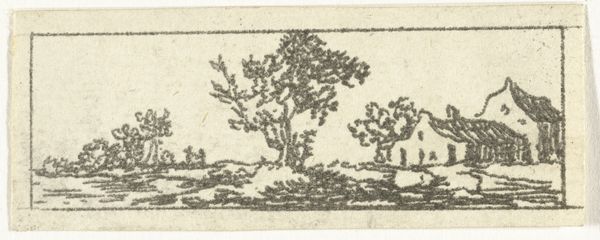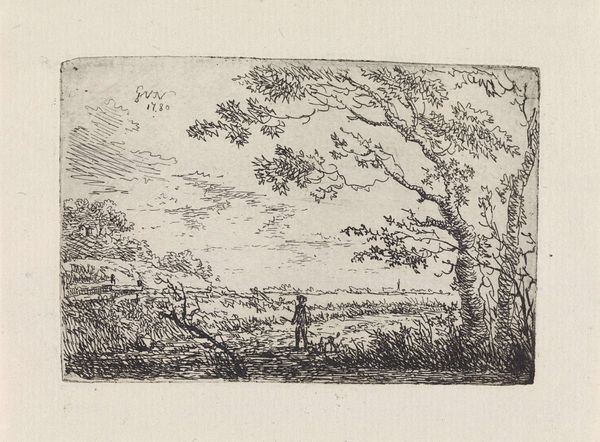
Herd of Sheep Near the Water, from Verscheyden Landtschapjes (Various Little Landscapes), Plate 8 1611 - 1621
0:00
0:00
drawing, print, etching, intaglio
#
drawing
#
dutch-golden-age
# print
#
etching
#
intaglio
#
landscape
Dimensions: Sheet: 4 in. × 5 5/8 in. (10.2 × 14.3 cm) Plate: 3 7/16 × 5 1/16 in. (8.8 × 12.9 cm)
Copyright: Public Domain
Editor: So, this is Willem Pietersz. Buytewech's etching "Herd of Sheep Near the Water, from Verscheyden Landtschapjes", dating from 1611 to 1621. It’s a remarkably detailed little scene. What strikes me is the way he renders the landscape; it’s so… animated, even in this small format. What do you see in this piece, thinking about the broader context? Curator: What I find compelling is how Buytewech, working during the Dutch Golden Age, is participating in the development of landscape as a distinct genre. Notice how the composition, while seemingly simple, serves to naturalize agrarian life. This wasn't just about representing nature; it was about portraying an ideal, reflecting the societal values placed on the land and its productivity after their independence. Does that emphasis on “productivity” shift your view? Editor: Absolutely. Knowing the historical emphasis on productivity and ownership changes how I see it. It’s not just a pretty landscape anymore. Curator: Precisely. Etchings like this, due to their reproducibility, became important tools in shaping and disseminating this idealized vision. The etching becomes part of the engine driving Dutch economic and cultural identity at that time. It suggests prosperity tied to their newly defined homeland. Who gets access to those engines is important. Editor: I never considered the implications of printmaking on this scale. Curator: Right! And consider who the audience was, people looking to own their view of a picturesque and productive Netherlands. Think of it as the real estate of the day! Editor: It’s fascinating to see how this image of a simple herd of sheep can actually tell us so much about Dutch society. I will remember that. Thanks! Curator: My pleasure! Understanding art in context opens up entirely new pathways for interpretation. It becomes more meaningful, more than just an object.
Comments
No comments
Be the first to comment and join the conversation on the ultimate creative platform.
